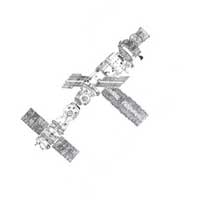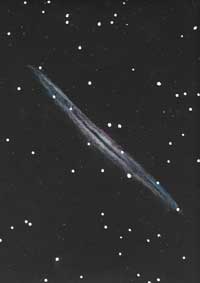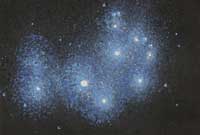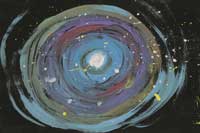Catch a Star! and win an astronomical competition! Inspire article
Catch a Star!, an international competition for school students, is starting its fifth year. Douglas Pierce-Price from ESO invites students from all over the world to take part.

Backes, Luxembourg
The aim of the programme, organised by the European Organisation for Astronomical Research in the Southern Hemisphere (ESO) and the European Association for Astronomy Education, is to encourage students to work together, learn about astronomy and discover things for themselves by researching information. Catch a Star! actually includes more than one competition, so there is something for everyone, no matter what their level.

Dumont, Luxembourg
Student teams can write a project about a chosen topic in astronomy, selecting an astronomical object such as a nebula, star, planet or moon, or a more general theme such as ‘black holes’ or ‘star formation’. They research this theme, and discuss how large telescopes such as ESO’s can play a part in studying it.
The most important goal is to develop an interest in science and astronomy through investigation and teamwork. For this reason, to make the programme inclusive and to avoid a sense of elitism, one section of the competition has prizes awarded by lottery.
There is also another section in which an international jury awards prizes including a trip to visit ESO’s Very Large Telescope facility on the Paranal mountain-top in Chile.
Younger students are invited to take part in an additional Catch a Star! drawing and painting competition, with prizes awarded with the help of a public web-based vote.
How to take part

Belarus
To take part in this year’s Catch a Star!, visit the website at www.eso.org/catchastar/ to find full details of the competition and to submit your entries.
The contest is now open, and the deadline for entries is 2 March 2007. Winners will be announced at the Science on Stage 2 teaching festival in Grenoble, France, in April 2007.
Results from the previous competition

Eistreike, Latvia
In the previous competition, which ran in 2005-2006, more than 130 teams from 24 countries wrote projects about astronomy. Winning projects included topics such as ‘Star clusters and the structure of the Milky Way’, ‘The fireworks galaxy – NGC 6946’, ‘The annual solar eclipse vs the Venus transit’, and ‘Sunspots’. In the picture competition, students created a large number of very impressive drawings and paintings, and some of the winners are shown in this article.
Given the importance of gender issues in science, and especially physics, it is encouraging to note that girls did particularly well in the competition. For example, of the 11 students who won travel prizes, ten are girls. There was also, as we have consistently seen in ESO’s educational projects, a strong showing from Central and Eastern European nations.
We welcome the wide range of students who took part and learned something new about the wonders of the Universe. With the new and updated competition, we hope that even more students, from even more countries, will Catch a Star!
ESO’s education activities
In addition to the Catch a Star! series of competitions (www.eso.org/catchastar/), ESO has other educational projects, often organised together with the European Association for Astronomy Education (EAAE).
- We are currently working on an interdisciplinary teaching project based on the Atacama Large Millimeter Array (ALMA). ALMA is a new telescope which ESO is in the process of building, as part of a global collaboration, at an altitude of 5000 m in Chile’s Atacama desert – the driest place on Earth. ESO and the EAAE are working with teachers to produce exciting interdisciplinary teaching material about ALMA. This material will highlight the links between 21st-century astronomy and the topics in engineering, earth sciences, biology, medicine, history and culture which spring from ALMA’s location in the Atacama desert. To find out more and to get involved, visit www.eso.org/outreach/eduoff/edu-prog/almaitp/
- A comprehensive website about the 2004 Venus transit is available at www.vt-2004.org
- A series of information sheets for students and teachers, the ESO/EAAE A series of information sheets for students and teachers, the ESO/EAAE ‘Journey across the Solar System’
- ESO, in conjunction with the European Space Agency, also offers a series of astronomy exercises at www.astroex.org
For questions about these resources or other material, please contact the ESO Educational Office at eduinfo@eso.org





